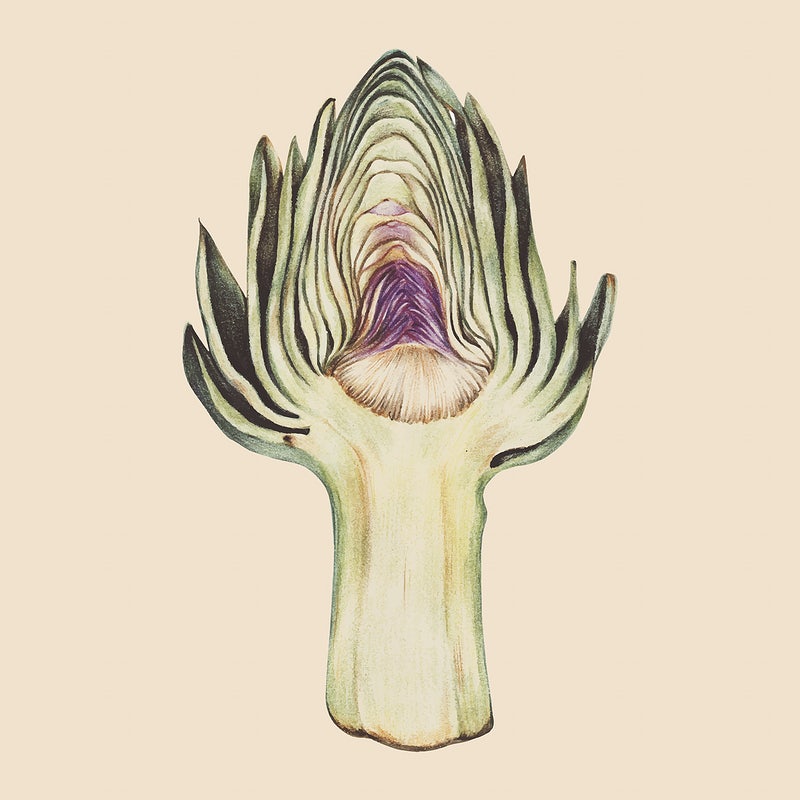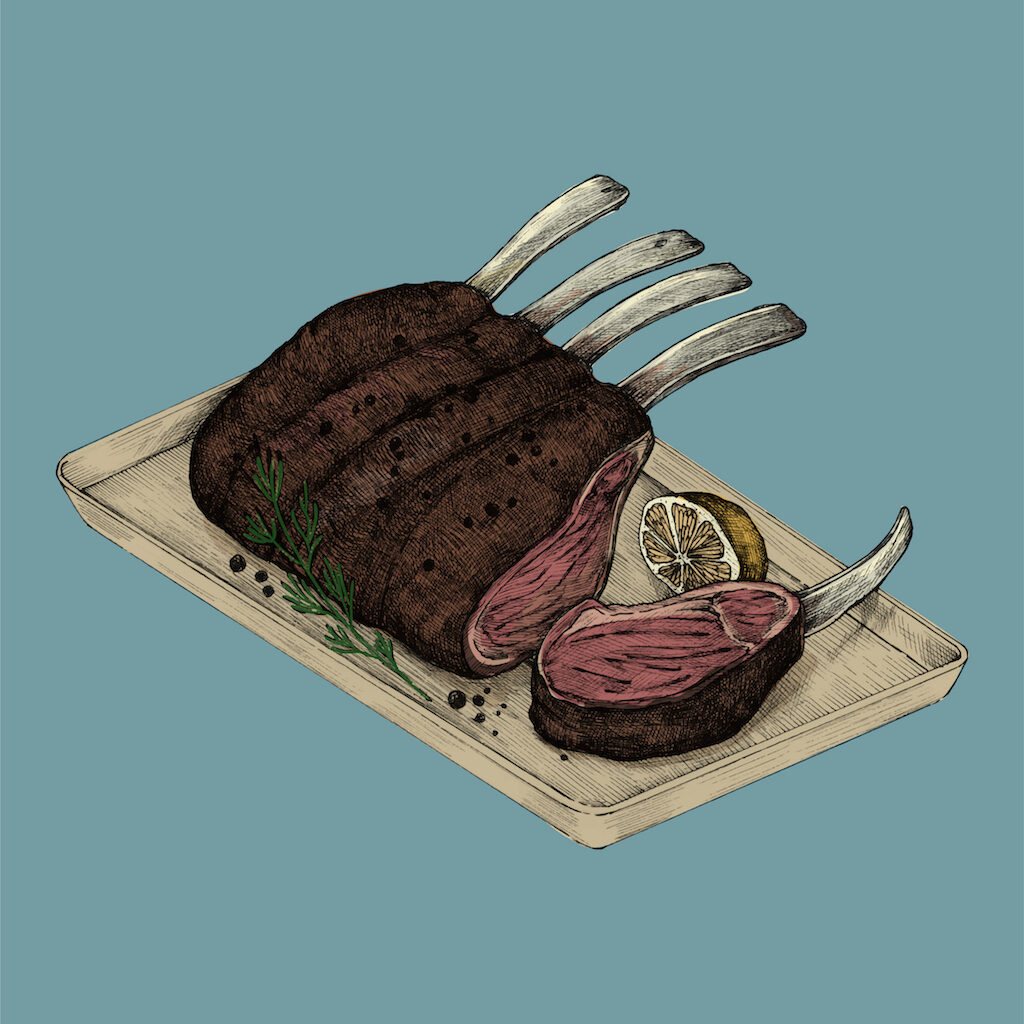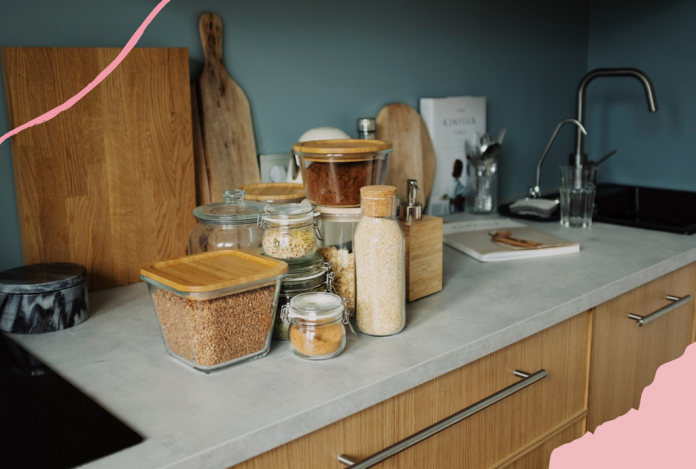Pinch, punch, first of the month….
Actually, don’t; our arms are feeling rather tender from waving goodbye to March so enthusiastically. As a mini-heatwave grips the UK and the latest lockdown lifts, there’s definitely a sense of positivity, brightness and lightness in the air.
And that’s most certainly being reflected on our plates, with crisp, green vegetables, zesty dressings and vibrant spicing taking centre stage after a long, hard winter of hearty stews and sluggishness.
But one area where this shift in eating risks having a negative impact is our meal planning. Those hearty stews we spoke of, alongside casseroles, curries, pasta bakes and more, all lent themselves incredibly well to batch cooking, freezing and reheating. Spring’s lighter produce means things need to happen a little more à la minute, and a little less in advance.
Not to worry. If you’re keen to carry smart shopping decisions and time-efficient cooking techniques into the new season, then you’ve come to the right place. For the IDEAL Spring meal planning, here are 5 steps to healthier meals this April.
SEASONAL SMARTS
It feels almost poetic to mark the onset of Spring, the beginning of British Summer Time, and the timely lifting of certain government restrictions by freshening up what’s on your plate by using the country’s finest seasonal produce.
Fortunately, the UK is blessed with some amazing produce in Spring, with asparagus, Jersey Royal potatoes, baby artichokes, rhubarb, watercress, purple sprouting broccoli, morels and wild garlic all tasting mighty fine right now. And the narrative thread which seems to connect them? A lighter, more verdant shade of earthy.
Eating locally and with the seasons isn’t only delicious; it’s also kinder to your wallet, the environment, your local economy and your health. Generally speaking, when food is picked in its prime and doesn’t have to travel far, it boasts its maximum potential, nutrient wise. Some have even suggested that produce which is in season boasts particular nutrients that the body needs for that time of year, such as summer fruits and their particularly high fluid and sugar content; ideal for replenishing you in the warmer months.
So, endeavour to cook with what’s seasonal this Spring, and you’ll be rewarded in myriad ways. Check out our tips on 5 IDEAL spring vegetables and how to cook them for more!

DIVERSIFY YOUR SPICES, SEASONINGS & SAUCES
Unlike the root vegetables and dark, gamey meats which defined Autumn and Winter, Spring’s crisp, fresh tasting vegetables don’t realise their full potential through low and slow cooking. Instead, a quick blanch, grill or stir fry maximises their flavour and retains their texture.
Having a store cupboard replete with a wide range of seasoning sauces and whole spices ready to be ground is so useful this season, and you can turn a few carefully chosen ingredients into a delicious meal or side dish, simply in the time it takes to stir-fry or dress them.
Some essentials include soy sauce, fish sauce, oyster sauce and white pepper – the key components of many stir fry seasoning mixes. A range of interesting hot sauces – if we had to choose just one, it’d be Encona – and several jars of pickles (ideally homemade) is enough to lift many a midweek dinner, too. And the best part? The majority of these spices, pickles and seasoning sauces are vegetarian, ensuring even the healthiest of meals is given a good kick of umami or a sharp lift of piquancy.
For simple dressings, having a good quality extra virgin olive oil and balsamic vinegar in the house goes a long way when used sparingly, and is ideal for those Spring ingredients we mentioned earlier.
BETTER MEAT, LESS OFTEN
Meat and fish can be seasonal, too, and those benefits of reducing your carbon footprint and supporting local farming remain the same for protein. That said, in 2021, many are trying to reduce their meat consumption, for the sake of their own health and the environments.
We’ve all heard about meat-free Mondays, and it’s a noble start to reducing our meat intake and in doing so our carbon footprint, weight and weekly spend. But one in seven days, it has to be said, seems a little half-hearted. Instead, why not plan for at least four or five meatless meals a week?
For the money (and guilt) saved on those meat free days, you can potentially spend more on better quality, more sustainably farmed protein on the days you do decide to treat yourself. As April begins, wood pigeon and lamb, crab and sea trout are all at their best, and abundant, too. Make smart shopping decisions by seeking these out this Spring.

DON’T DENY YOURSELF THE ODD TREAT
This has been an incredibly tough year for so many, and with some hope on the horizon, of course, you shouldn’t deny yourself the odd treat. Right now, a whole host of top restaurants across the country, in lieu of closures brought about by lockdown, are delivering meal kits straight to your door. This might be the only chance you get to enjoy a meal at home from the likes of Som Saa, Sabor or even Heston Blumenthal’s London restaurant Dinner, so seize it!
Or for something a little more affordable, we’re currently loving the seasonal lamb and mint pasty from the Proper Pasty Co. Well, we did agree that the occasional treat was fine, and pasties by post is about as indulgent as it gets!
MAKE GOOD USE OF YOUR FREEZER
Though we’ve been extolling the virtues of enjoying seasonal Spring produce in the UK, it’s just as important to ensure that your plate contains plenty of variety, particularly in colour. In fact, according to the Food and Agriculture Organisation of the United Nations, ‘’colour is key’’.
They go on to say that ‘’It’s not just a matter of eating more fruits and vegetables; consuming a variety of different coloured produce is important as well.’
‘Why? Because different colours in fruits and vegetables tend to correspond to different combinations of nutrients and other phytochemicals, each with its own array of health benefits. Reds, oranges and yellows, greens, blues and purples — the more colours on your plate, the more health-promoting properties in your diet.’’
The freezer, much-maligned in some foodie circles, is brilliant at providing you with that rich colour palette of ingredients you need, all in the thriftiest way possible. The virtues of having frozen veggies and fruit in the freezer shouldn’t be overlooked either, with items frozen at the point of picking, ingredients lifted straight from the freezer are often at their most nutritious, too. Many chefs say, for instance, that frozen peas are actually better than the freshly podded sort, since the flavour was ‘locked in’ the moment they were picked.
Other vegetables which respond particularly well to being frozen include spinach, sweetcorn, carrots and beetroot; all providing variety in terms of colour and therefore, nutrition.
What’s more, fruit, though prohibitively expensive for many in recent years when fresh, is affordable when frozen, and ideal for smoothies or scattering over your cereal.





